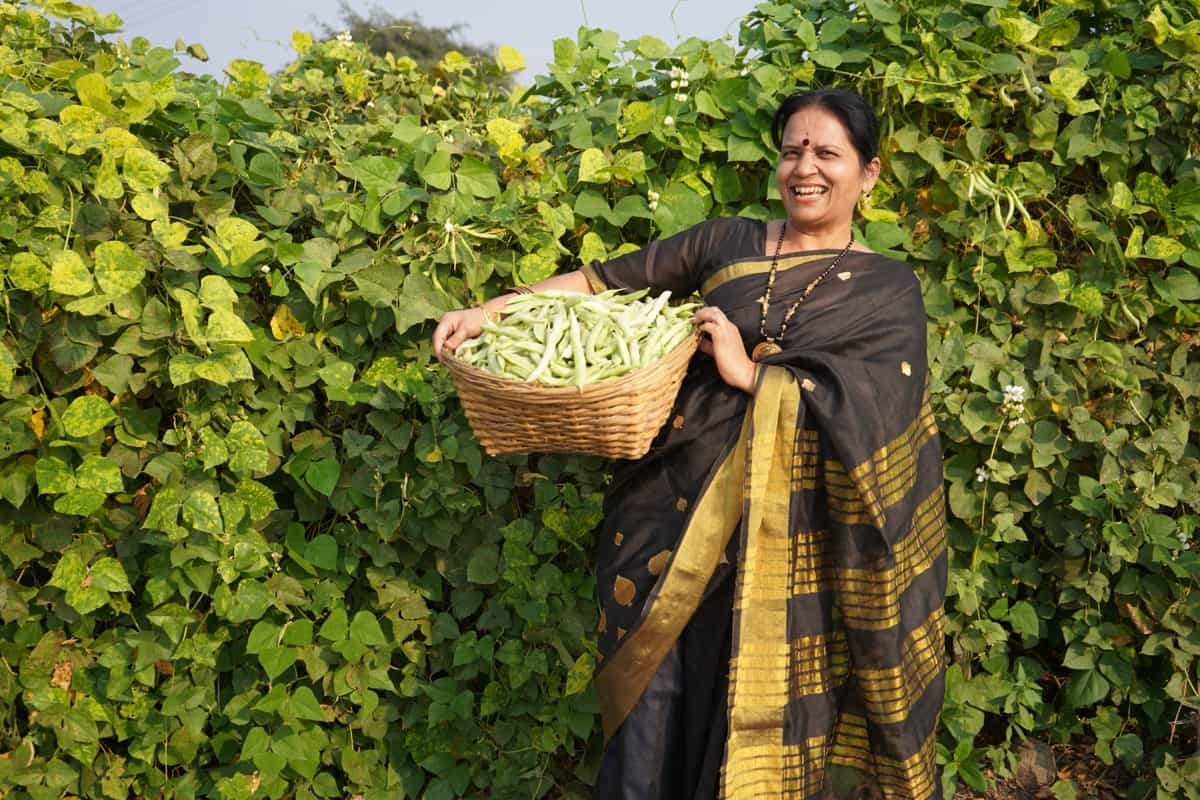Welcome to the Ultimate Guide to Natural Vegetable Farming! Are you ready to embark on your journey of sustainable and environmentally friendly vegetable farming? This comprehensive guide is your trusted companion, covering everything you need to know to successfully grow a variety of vegetables without the use of synthetic chemicals. From soil preparation to seed selection to pest management and harvest techniques, we’ve got you covered with practical, actionable advice.

Natural vegetable farming refers to the practice of growing vegetables using organic and sustainable methods without the use of synthetic chemicals or pesticides. This approach focuses on enhancing soil health through techniques such as composting, crop rotation, and cover cropping to promote overall plant health and pest resistance. Natural farming also encourages biodiversity, utilizing natural predators to control pests and promoting beneficial insects.
Getting Started: Essential Preparations
Before beginning natural vegetable farming, it is essential to make enough preparations for a good harvest. Begin by determining if your site is suitable for vegetable cultivation, taking into account soil quality, sunshine exposure, and water availability. To establish a healthy growth environment for your veggies, do soil testing to assess nutrient levels and pH. Add compost, organic matter, or natural fertilizers as required.
To optimize yields while minimizing insect concerns, design your garden layout with crop rotation and companion planting in mind. Planting legumes, such as beans or peas, may help fix nitrogen in the soil, which benefits future crops. Create a composting system to convert kitchen leftovers and garden trash into nutrient-rich soil amendments.
Selecting Organic Seeds
Seed selection is a pivotal aspect of natural vegetable farming. The seeds you choose lay the foundation for a healthy and sustainable crop. When making your selection, opt for varieties that are certified organic and non-GMO, ensuring they have not been treated with synthetic chemicals. Organic seeds are often adapted to thrive in organic growing conditions, making them the ideal choice for natural farming practices.
In case you missed it: Natural Farming for Sustainable Livestock Management

For instance, heirloom seeds, which are open-pollinated varieties passed down through generations, offer genetic diversity and resilience to pests and diseases. When selecting seeds, like as the climate of your region, the type of soil you have, and the specific qualities you desire in your vegetables. Look for seeds from reputable organic seed companies or local seed savers who prioritize sustainability and diversity.
Natural Soil Enrichment Techniques
One effective method is composting, where organic matter such as kitchen scraps, yard waste, and livestock manure is decomposed to create nutrient-rich compost that improves soil structure and fertility. Additionally, cover cropping involves planting crops like legumes or grasses during the off-season to reduce erosion, fix nitrogen in the soil, add organic matter when the plants are tilled back into the soil.
Another technique is crop rotation, where different types of vegetables are planted in succession to prevent nutrient depletion and reduce the build-up of pests and diseases. For example, planting nitrogen-fixing plants like peas or beans before heavy feeders like tomatoes can help replenish soil nutrients naturally. Utilizing mulching with materials like straw or leaves retains moisture, suppresses weeds, and improves soil health by breaking down and adding organic matter to the soil.
Implementing Crop Rotation
Crop rotation is a fundamental practice in natural vegetable farming that involves alternating the types of crops grown in specific locations over time to promote soil health, prevent nutrient depletion, and control pests and diseases. By rotating crops, different plant families are introduced to the soil, reducing the build-up of specific pests and diseases that may target a particular crop.
For example, a common crop rotation strategy is the “three-year rotation,” where crops are categorized into different groups (e.g., legumes, brassicas, and root vegetables) and shifted to different beds each year. In the first year, legumes like peas or beans are planted to fix nitrogen in the soil. The following year, brassicas like broccoli or cabbage are grown to utilize nitrogen and suppress nematode populations. Finally, root vegetables such as carrots or potatoes are cultivated in the third year to break the pest cycle further.
Using Cover Crops and Green Manures
In natural vegetable farming, cover crops and green manures are valuable techniques for improving soil health, providing nutrients, suppressing weeds, and enhancing overall crop productivity. Cover crops are typically grown between main vegetable crops or during fallow periods to protect the soil from erosion, increase organic content, and fix nitrogen through a process called nitrogen fixation.
Leguminous cover crops, like clover or alfalfa, are particularly beneficial for replenishing soil nitrogen levels. Green manures are cover crops that are intentionally grown and then incorporated into the soil to add nutrients and improve soil structure. For example, planting a cover crop of winter rye in the fall and turning it under in the spring can help increase soil organic matter content and enhance soil fertility for subsequent vegetable crops.
Water Conservation Methods
Water conservation of natural vegetable farming, as efficient water management, is key to sustainable production and environmental stewardship. One effective method of drip irrigation. This method not only reduces water waste by minimizing evaporation and runoff but also ensures that plants receive the right amount of water where they need it most, promoting their health and productivity.
Utilizing mulching is another effective water conservation technique in natural vegetable farming. Mulch, such as straw, leaves, or compost, helps retain soil moisture, suppress weeds, and regulate soil temperature, reducing the need for frequent watering. Furthermore, good soil management measures, such as frequent soil testing and amendment with organic matter, may increase soil structure and water retention capacity, enabling plants to access water more effectively.
Natural Pest Control Strategies
Natural pest control strategies are not just alternatives to synthetic pesticides, they are effective solutions in their own right. Biological control, where beneficial insects or organisms are introduced to control pest populations naturally, is a proven method. For instance, ladybugs feed on aphids, reducing their numbers and preventing damage to vegetable crops. Companion planting, another strategy, is a tried and tested method where certain plants are intercropped to deter pests or attract beneficial insects.
In case you missed it: Leaf Spot Management in Plants: Causes, Symptoms, and How to Treat With Natural and Organic Remedies

Crop diversification is another key pest control strategy in natural vegetable farming. By planting a variety of crops, pests are less likely to build up in large populations and spread rapidly throughout the farm. Additionally, cultural practices like crop rotation, proper spacing, and soil fertility management can help create healthy plants more resistant to pests and diseases.
Creating and Using Organic Mulch
Organic mulch improves soil health, conserves moisture, suppresses weeds, and provides nutrients to vegetable crops in natural vegetable farming. One common method of creating organic mulch is using straw, leaves, grass clippings, compost, or wood chips. These materials are put around the base of vegetable plants to assist conserve moisture, regulate soil temperature, and control weed development.
Organic mulch decomposes over time, providing organic matter to the soil and supplementing it with vital nutrients. As the mulch decomposes, beneficial microorganisms thrive, enhancing soil fertility and structure. Additionally, organic mulch acts as a protective barrier, preventing soil erosion and runoff during heavy rainfall and promoting soil biodiversity.
Natural Weed Management
Mulching is an efficient way to control weeds naturally. Using organic materials like straw, leaves, or grass clippings around vegetable plants helps to control weed development by obstructing sunlight and preventing weed seeds from developing. Furthermore, mulch helps to retain soil moisture, control soil temperature, and contribute organic matter to the soil, fostering healthy plant development while inhibiting weed establishment.
Another natural weed management technique is hand weeding or cultivation. By regularly weeding by hand or using hand tools, farmers can prevent weed competition for nutrients, water, and sunlight without the need for chemical interventions. Crop rotation, cover cropping, and intercropping can also help suppress weeds by disrupting their life cycles and creating unfavorable conditions for weed growth.
DIY Natural Fertilizers and Soil Amendments
DIY natural fertilizers and soil amendments are essential components of natural vegetable farming, as they help improve soil fertility, promote plant growth, and enhance overall crop health without the use of synthetic chemicals. Compost is a popular DIY natural fertilizer prepared from decaying organic materials, including kitchen scraps, yard trash, and manure. Compost adds nutrients to the soil and soil structure and promotes beneficial microbes that help plants grow.
Another efficient DIY natural fertilizer is manure tea, which is created by steeping old animal dung in water to produce a nutrient-rich liquid fertilizer. Manure tea offers important nutrients to plants, improves soil fertility, and boosts microbial activity. Additionally, handmade soil supplements such as bone meal, fish emulsion, and seaweed extract may be utilized to deliver particular nutrients to vegetable plants while also addressing soil shortages in a natural and sustainable manner.
Integrating Livestock into Vegetable Farming
Integrating livestock into vegetable farming is a holistic approach that promotes symbiotic relationships between animals and plants, enhancing the overall health and productivity of the ecosystem. One common method of integration is rotational grazing, where livestock are allowed to graze on vegetable fields after the crops have been harvested. The animals help control weeds, pests, and diseases, while their manure provides valuable nutrients to the soil, promoting soil fertility and enhancing crop yields.
In case you missed it: Bolting Management in Plants: Prevention for Premature Flowers and Seeding in Crops and Vegetables

Livestock can also be used to manage crop residues and cover crops by grazing on them, aiding in their decomposition and nutrient cycling. Additionally, incorporating livestock such as chickens or ducks into vegetable farms can help control insect pests and weeds and provide additional sources of organic matter through their manure.
Building Biodiversity on Your Farm
Building biodiversity on a farm aspect of natural vegetable farming that promotes ecological balance, enhances soil health, and supports the overall sustainability of the ecosystem. One way to increase biodiversity is by planting diverse cover crops in between vegetable rows. Cover crops like clover, legumes, and grasses provide habitat for beneficial insects, improve soil structure, and add organic matter to the soil.
Another method to boost biodiversity is by incorporating hedgerows, windbreaks, and pollinator-friendly plants around vegetable fields. These features attract beneficial insects, birds, and pollinators, which contribute to pest control, pollination, and overall ecosystem health.
Natural Pollination Techniques
One important natural pollination technique is encouraging native pollinators, like bees, butterflies, and insects, to visit vegetable crops. Planting flowers and providing a habitat for these beneficial insects can attract pollinators to the farm and enhance pollination efficiency. Another natural pollination technique is practicing crop diversification to attract a wide range of pollinators. By planting plants that bloom at different times, farmers can support pollinators throughout the growing season and ensure consistent pollination of vegetable crops.
Harvesting and Post-Harvest Handling
Harvesting and post-harvest management are critical processes in natural vegetable farming because they affect the quality, freshness, and shelf life of the food. Proper harvesting practices are required to guarantee that crops are gathered at the optimal maturity and quality. Harvesting veggies in the early morning or late evening when temperatures are lower helps to retain their freshness and avoid post-harvest losses.
In case you missed it: 20 Best Homemade Fertilizers for Money Plant: DIY Recipes and Application Methods

After harvesting, precise post-harvest treatment methods are required to preserve the freshness and nutritional content of the vegetables. This involves cleaning, sorting, and packaging goods in a timely way to avoid spoiling and maintain quality. Proper storage conditions, such as maintaining optimal humidity and temperature, are critical in increasing the shelf life of vegetables. Leafy greens, like spinach and lettuce, should be kept cold and damp to avoid withering. At the same time, root vegetables such as carrots and potatoes need a cold, dry storage environment to avoid sprouting.
Marketing Your Natural Produce
Marketing natural produce from a vegetable farm involves promoting the unique qualities of the crops grown using sustainable and environmentally friendly practices. One effective strategy for marketing natural produce is through direct sales at farmers’ markets, roadside stands, or Community Supported Agriculture (CSA) programs. These direct marketing channels allow farmers to connect with consumers, educate them about the benefits of natural farming practices, and build relationships based on trust and transparency.
In case you missed it: Summer Green Gram Cultivation: Varieties of Mung Beans and Irrigation Management

Another important aspect of marketing natural produce is highlighting certifications, such as organic or non-GMO, that verify the sustainable and natural production methods used on the farm. These certifications help attract consumers who prioritize health, environmental sustainability, and ethical food production.
The Ultimate Guide to Natural Vegetable Farming emphasizes sustainable practices such as biodiversity promotion, natural pollination techniques, proper harvesting and post-harvest handling, and effective marketing strategies. By implementing these methods, farmers can cultivate high-quality produce while fostering environmental health and community relationships.
- Ultimate Guide to Natural Vegetable Farming
- Natural Farming for Sustainable Livestock Management
- Dairy Farm Technology in India: The Future of Dairy Husbandry
- Comprehensive Guide to Organic Farming in Villages
- Modern Sheep Farming Technology: The Future of Sheep Husbandry
- Goat Farming Technology: The Future of Goat Husbandry
- How to Build a Low-budget Goat Shed: Cheap Ideas and Tips
- Goat Farming Training Programs in India: A Beginner’s Guide
- Types of Pesticides Used in Agriculture: A Beginner’s Guide
- Economical Aquaculture: A Guide to Low-Budget Fish Farming
- 15 Common Planting Errors That Can Doom Your Fruit Trees
- How to Make Houseplants Bushy: Effective Tips and Ideas
- Innovative Strategies for Boosting Coconut Pollination and Yield
- Pollination Strategies for Maximum Pumpkin Yield
- The Complete Guide to Chicken Fattening: Strategies for Maximum Growth
- Natural Solutions for Tulip Problems: 100% Effective Remedies for Leaf and Bulb-Related Issues
- Revolutionizing Citrus Preservation: Towards a Healthier, Greener Future
- Natural Solutions for Peony Leaf and Flower Problems: 100% Effective Remedies
- Maximizing Profits with Avocado Contract Farming in India: A Comprehensive Guide
- Natural Solutions for Hydrangea Problems: 100% Effective Remedies for Leaf and Flowers
- The Ultimate Guide to Choosing the Perfect Foliage Friend: Bringing Life Indoors
- From Sunlight to Sustainability: 15 Ways to Use Solar Technology in Agriculture
- The Ultimate Guide to Dong Tao Chicken: Exploring from History to Raising
- The Eco-Friendly Makeover: How to Convert Your Unused Swimming Pool into a Fish Pond
- Mastering the Art of Delaware Chicken Farming: Essentials for Healthy Backyard Flocks
- 20 Best Homemade Fertilizers for Money Plant: DIY Recipes and Application Methods
- How to Craft a Comprehensive Free-Range Chicken Farming Business Plan
- Brighten Your Flock: Raising Easter Egger Chickens for Beauty and Bounty
- How to Optimize Your Poultry Egg Farm Business Plan with These Strategies
- Subsidy for Spirulina Cultivation: How Indian Government Schemes Encouraging Spirulina Farmers
- Ultimate Guide to Raising Dominique Chickens: Breeding, Feeding, Egg-Production, and Care
- Mastering the Art of Raising Jersey Giant Chickens: Care, Feeding, and More
- Ultimate Guide to Raising Legbar Chickens: Breeding, Farming Practices, Diet, Egg-Production
- How to Raise Welsummer Chickens: A Comprehensive Guide for Beginners
- How to Protect Indoor Plants in Winter: A Comprehensive Guide
- Ultimate Guide to Grow Bag Gardening: Tips, Tricks, and Planting Ideas for Urban Gardeners






